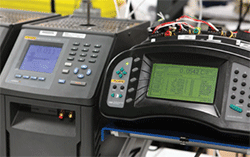As the director of an ISO/IEC 17025:2005 accredited metrology lab, Brandon Wold has experienced his share of panic phone calls and quick consultations with plant managers and quality managers. Their production has slowed or ceased due to a lack of a calibration program or key instruments that are out of calibration. For one, a smelting operation that melted old iron and pressed it into large sheets as new steel, receiving a complaint from their largest customer about the quality of their product prompted an investigation. Operations leaders determined that their temperature instruments were out of calibration and their heating process simply was not hot enough.
How Often to Calibrate?
While typical calibration cycles are suggested according to industry standards, these intervals are set within the facility based on the production needs, instrument usage, and applications. In some cases, it may make sense to change or extend a cycle. In other cases, it may prove short-sighted.
"Intervals may move from a one-year calibration cycle to a five-year cycle to reduce costs but risk management needs to be taken into consideration,” said Wold. “Ultimately, to minimize the risk of having to do an impact analysis—for products that were measured with a temperature instrument that was out of calibration—and subsequently initiating a product recall, it may be best to stick to a proven calibration cycle.”
InnoCal designs calibration solutions, which may include making monthly or annual visits, setting up a calibration cycle, conducting an asset review, or reviewing calibration procedures. They also provide technical support including info about industry norms, military procedures, or proper calibration techniques. When necessary, service may be expedited to meet specific needs.